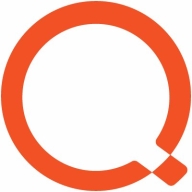

Quest KACE Systems Management Appliance (SMA) and Fortinet FortiClient compete in system management and security, respectively. In system management, Quest KACE holds the upper hand due to its integration capabilities, while in security, Fortinet FortiClient excels with its robust protection features.
Features: Quest KACE Systems Management Appliance integrates well with tools like Bomgar and ServiceNow, enhancing endpoint and asset management. It provides effective remote deployment and multi-device management. Fortinet FortiClient is known for its ease of deployment, malware detection, and VPN capabilities which integrate into Fortinet's security ecosystem, providing comprehensive endpoint protection.
Room for Improvement: Quest KACE Systems Management Appliance needs better scalability, patch management, and user interface. Improvements in automation and integration are also desired. Fortinet FortiClient requires a more user-friendly interface, better integration, and enhanced VPN connectivity, alongside improved support and documentation.
Ease of Deployment and Customer Service: Quest KACE offers on-premises deployment options with reliable customer support, though experiences can be inconsistent. Fortinet FortiClient supports on-premises, hybrid, and cloud deployments, with streamlined setup processes. Both provide dependable customer service, with Fortinet favored for rapid setup and deployment simplicity. Quest KACE is valued for feature richness, while Fortinet is recognized for strong security.
Pricing and ROI: Quest KACE Systems Management Appliance is competitively priced, offering cost-effective system management, often yielding ROI within a year. Fortinet FortiClient is appreciated for affordable VPN services and competitive plans, especially beneficial for those in Fortinet's ecosystem. Both products enhance ROI through time savings and increased productivity.
The VPN performance has a substantial impact on our remote workforce.
The return on investment is seen in the quick access to information, good inventory management, and efficient systems management.
They initiate the troubleshooting process quickly and resolve issues in a timely manner.
Technical support can be logged on Fortinet's support portal.
The technical support for FortiClient is excellent.
I would rate the customer support for Quest KACE Systems Management Appliance (SMA) as a 10.
The customer service is very good, providing quick customer support in Spanish.
The scalability could use improvement as you need to ensure that routes and policies are aligned, which can be complex.
I hope Fortinet will start an insider developer program where professionals can provide feedback on new releases to ensure improvements.
The scalability rates at nine out of ten because the features can be easily extended.
We have outgrown the size of one KACE appliance and are now running two.
The product is very scalable as it supports 10,000 thousand endpoints with just one appliance.
Its stability level is excellent.
The overall stability of Fortinet FortiClient rates at nine out of ten.
The dashboard could be refreshed, and more customization features could be added.
The routing and policy need to be tailored between both to ensure proper functionality.
Fortinet frequently releases updates without thorough testing.
Currently, we have to go into each org to deploy applications when we need them all across the university.
The user interface needs improvement as customers have mentioned they do not like the interface since it is not an SMA-based interface.
FortiClient is a value-for-money product and is not considered expensive compared to similar products on the market.
FortiClient is cost-effective since the client itself is free with the purchase of Fortinet.
Justifying the price to clients can be difficult.
The pricing is in the middle range of the market, not too expensive but not the cheapest either.
My experience with pricing, setup cost, and licensing for Quest KACE Systems Management Appliance (SMA) is that, hands down, it beat all of the others in simplicity and pricing.
I strongly recommend this solution, especially for Fortinet customers who use FortiGate or other Fortinet products, as they can easily integrate these features and exchange information seamlessly.
We appreciate its VPN capabilities and the features that offer extra security functionalities like antivirus and malware scanning.
The most valuable feature of FortiClient is its high security level.
Scripting has saved us hundreds of hours over the years when patching these vulnerabilities compared to how we did it before.
The most valuable features include simplicity, which makes systems management easier and faster, especially for device management.


FortiClient is a fabric agent that delivers endpoint protection, endpoint compliance, and secure access in a single, lightweight, lightweight client, providing visibility, information, and control to your endpoints. In addition, it enables secure, remote connectivity to the security fabric. It also integrates network and endpoint with segmentation and automation. FortiClient enables unified endpoint awareness by sharing endpoint telemetry with the security fabric. It is compatible with third-party EDR (endpoint detection and response and anti-malware solutions.
The FortiClient fabric agent can:
• Report on the status of a device, including firmware version and applications running.
• Send all suspicious files to a fabric sandbox.
• Enforce USB control, application control, URL filtering, and firmware upgrade policies.
• Provide application firewall service and malware protection.
• Enable devices to connect securely to the security fabric over either ZTNA tunnels or VPN (IPsec or SSL), both encrypted. The connection to the security fabric can be either a SASE service or a FortiGate next-generation firewall.
You can purchase FortiClient with one of three levels of capability:
Zero Trust security - The ZTNA edition enables both VPN and ZTNA encrypted tunnels, as well as USB device control and URL filtering.
Endpoint security - The EPP/APT edition adds AI-based NGAV (next-generation antivirus), application firewall, endpoint quarantine, and support for cloud sandbox.
Cloud-based endpoint security
Benefits and Features
• Fabric agent leverages integrations and provides telemetry information to the rest of the Fortinet security fabric.
• SAAS control and web/content filtering
• Dynamic access control helps with automation and simplifies compliance.
• Software inventory management enables visibility as well as management of licenses.
• Automated response detects and isolates any endpoints that may be compromised.
• ZTNA delivers better remote access and consistent application access policies
• Managed endpoint security services remotely assist with setup, configuration, deployment, vulnerability monitoring, and overall monitoring of endpoint security.
Reviews from Real Users:
PeerSpot users like that FortiClient is easy to use and integrates well with other solutions. They also appreciate the richness of its features and find it to be inexpensive in comparison to other products that require separate purchases for separate features.
Quest KACE Systems Management Appliance is a comprehensive tool for managing IT endpoints. It facilitates asset management, software distribution, and endpoint tracking while offering remote access capabilities and a centralized help desk.
Quest KACE Systems Management Appliance is designed for organizations that need efficient endpoint management. It offers a range of features like inventory tracking, automated patch management, and ticketing. By integrating with remote access tools such as Bomgar, Quest KACE helps reduce manual tasks involved in managing software updates and system deployments. Although it faces challenges in scalability and requires improvements in integration and reporting, it remains a versatile choice for asset tracking and endpoint administration.
What are Quest KACE SMA's key features?
What benefits should users consider?
Quest KACE Systems Management Appliance is implemented across industries for managing IT assets and endpoints, particularly where remote management and compliance are critical. It's employed in healthcare, education, and government sectors for efficient patch management, inventory control, and software deployment, aiding organizations in managing security accreditations and centralizing help desk operations.
We monitor all Endpoint Compliance reviews to prevent fraudulent reviews and keep review quality high. We do not post reviews by company employees or direct competitors. We validate each review for authenticity via cross-reference with LinkedIn, and personal follow-up with the reviewer when necessary.